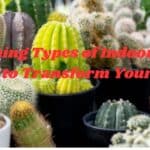Heating
As winter rolls in, we start turning up the heat indoors, creating a cosy haven from the chill outside. But for our indoor plants, winter heating can present a unique challenge. Indoor plants thrive in stable, moderate conditions, so adjusting to the dry, warm air from heaters can be difficult for them. Fortunately, with a few mindful adjustments, you can keep your indoor plants thriving even when the heater’s on.
Table of Contents
Why Heating Affects Indoor Plants
Indoor plants prefer stable conditions similar to their natural habitats. During the winter, central heating and space heaters can make the air much drier, lowering humidity and disrupting the balance many plants need to stay healthy. Heaters can also create uneven temperature zones, with warm pockets near heat sources and cooler areas farther away, leading to stress in plants sensitive to sudden changes in temperature.
Common Issues with Heaters and Indoor Plants
When exposed to heating elements without proper care, plants may exhibit a range of problems:
- Drying Out Quickly: The air around heaters is often dry, causing plants to lose moisture rapidly, which can make the soil dry out faster.
- Browning Leaf Edges: Dry air can lead to crispy leaf edges or yellowing, as moisture is pulled away from leaves.
- Wilting and Dropping Leaves: Sudden temperature fluctuations can cause plants to wilt or shed leaves as they try to adjust.
- Attracting Pests: Stressed plants are more susceptible to pests like spider mites, which thrive in low-humidity environments.
Ideal Heating Solutions for Indoor Plants
The good news is that you don’t have to choose between a cozy home and healthy plants! Here are some heater-friendly tips to help your indoor jungle thrive all winter long.
1. Keep Plants at a Safe Distance from Heaters
- Tip: Place plants at least a few feet away from heaters to avoid direct exposure to hot, dry air. Direct proximity can lead to quick dehydration and scorched leaves.
- Personal Anecdote: I once placed my peace lily too close to a heater, thinking it would love the warmth. Within days, the leaves started browning at the edges. Moving it further away made a huge difference in restoring its lush green look.
2. Increase Humidity
- Use Humidifiers: A humidifier can be a game-changer for indoor plants, especially in winter. By maintaining a moderate humidity level, you can keep plants hydrated and happy.
- DIY Humidity Solutions: Grouping plants together or placing them on trays filled with water and pebbles can help increase humidity naturally. The water evaporates slowly, creating a micro-humid environment around the plants.
3. Rotate Plants Periodically
- Why: Rotating plants every week ensures even exposure to temperature and light, helping prevent uneven growth or drying.
- Tip: This is especially useful for plants near windows, as cold drafts may come through, and rotating them can reduce shock from sudden changes.
4. Choose Resilient Indoor Plants for Heated Rooms
- Consider Hardy Varieties: Some plants are naturally more tolerant of drier, warmer conditions. Snake plants, ZZ plants, and spider plants are a few that can handle fluctuating temperatures and lower humidity.
- Placement Tip: If you love the look of tropical plants but struggle with winter heating, consider clustering hardy plants near the heater and keeping delicate ones away.
Winter Watering Tips for Heated Spaces
One of the most crucial aspects of indoor plant care near heaters is adjusting your watering routine.
- Water More Frequently (But Lightly): Plants in heated rooms may need slightly more frequent watering. However, be cautious not to overwater as root rot can still be an issue.
- Monitor Soil Moisture: Regularly check the soil moisture with your finger or a moisture meter. If the top inch feels dry, it’s likely time for a drink.
- Avoid Cold Water: Use lukewarm water instead of cold tap water. Cold water can shock roots, especially in winter. Room-temperature water is best for maintaining stable soil conditions.
Light and Placement Considerations in Winter
Indoor light changes significantly during winter, as daylight hours are shorter. Pairing smart placement with heating adjustments will give your plants the best chance to thrive.
- Maximize Natural Light: Move plants closer to windows to get as much natural light as possible, but avoid drafts. South-facing windows usually get the most sunlight.
- Supplement with Grow Lights: If natural light is scarce, consider adding a grow light. LED grow lights are a great way to maintain plant health without overheating your space.
- Monitor Cold Drafts: Avoid placing plants in spots where they might receive direct drafts from doors or windows when open. Plants like fiddle leaf figs and pothos may lose leaves if exposed to constant cold drafts.
My Winter Plant Care Routine
Each winter, I adjust my plant care routine to ensure they stay as comfortable as possible. I move most of my moisture-loving plants, like ferns and peace lilies, to one room with a humidifier. Hardy plants like snake plants stay in the living room where the heater runs often, as they’re more tolerant of fluctuating conditions. Every week, I do a “rotation day,” moving each plant slightly to give it different light exposure and reduce any risk of uneven growth.
The biggest lesson I’ve learned? Observing how each plant reacts to winter conditions is key—small changes in routine can make a big difference in their health.
Best Indoor Plants for Heated Spaces
If you’re looking to add some new plants to your home this winter, consider varieties that are more tolerant of heated indoor conditions. Here are a few low-maintenance, resilient indoor plants that handle heat well:
- Snake Plant (Sansevieria): Known for its resilience, the snake plant can tolerate dry air and fluctuating temperatures.
- ZZ Plant: With low watering needs, the ZZ plant thrives in low humidity and indirect light.
- Spider Plant: Adaptable and hardy, spider plants do well with moderate watering and can tolerate dry indoor air.
These plants add life and greenery to any space without requiring constant humidity or temperature regulation, making them ideal for rooms with heaters.
Final Thoughts: Balancing Heat and Indoor Plant Care
Heaters and indoor plants can coexist with a few strategic adjustments. Maintaining proper humidity, monitoring soil moisture, and placing plants a safe distance from heat sources can help your plants thrive all winter long. Remember that each plant has its own personality, so some may need a bit more attention than others. With a little care and observation, you can enjoy a lush indoor garden year-round, even when the heater’s on.
So, as the temperatures drop and you turn up the heat, follow these simple tips to keep your plants happy, healthy, and ready to greet spring in full bloom.










